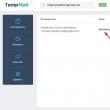Sections of the site
Editor's Choice:
- BIOS beeps when turning on PC
- How to delete a page in a contact?
- How to delete a deleted VKontakte page?
- ENIAC - the very first computer in the world
- VKontakte was blocked at work, how can I get around it?
- How to delete a VKontakte page from your phone
- Methods to format a hard drive using BIOS
- How to log into Odnoklassniki if the site is blocked?
- How to permanently delete a page in contact?
- How to bypass VK and Odnoklassniki blocking in Ukraine
Advertising
| Windows 10 telemetry. How to set up diagnostic data collection |
|
This isn't the first Microsoft operating system to collect diagnostic data. However, it was in Windows 10 that Microsoft seriously changed the structure of the data collected, and also provided users with the ability to control telemetry parameters. The concept of “Windows as a Service” played an important role in changing telemetry policy. The company decided to abandon the model of releasing a new version of the system every three years and switched to a model of releasing two functional updates for the system per year. Telemetry or diagnostic data plays an important role in the development of the operating system because Microsoft uses this data to analyze and improve Windows. All editions of Windows 10 except Enterprise have diagnostic data collection enabled by default. In fact, most versions of Windows 10 ship without the ability to completely disable telemetry collection. Although you can limit data collection by changing the data collection volume to “Basic”, you will not be able to completely block the telemetry feature. Windows 10 supports 4 different telemetry data collection options, but only two of them are available in the Settings app - Basic and Full. The two remaining diagnostic levels, “Security” and “Advanced,” can only be enabled using the Local Group Policy Editor or the System Registry Editor. The order of data collection levels based on volume is Full > Advanced > Basic > Security.
The Settings app gives you the same control over telemetry settings that you get when you initially set up your operating system.
The default data volume is “Full”. At this level, Windows 10 collects a large amount of data and regularly sends it to Microsoft servers. You can switch to the Basic level in the Settings app to limit data collection. The Basic data volume is the lowest data collection level available in consumer versions of Windows 10. If you're a member of the Windows 10 Insider Preview program, your device will be permanently set to Full.
Telemetry levelsSo, the following telemetry levels are available:
Configuring telemetry through the local group policy editorThe Local Group Policy Editor shows all four levels of telemetry collection, but only three of them are available for consumer devices. To launch the Local Group Policy Editor, follow these steps
Navigate to the following path: Computer Configuration > Administrative Templates > Windows Components > Data Collection and Preview Builds. Double click on policy Allow telemetry to display the policy management window.
By default, the policy is not configured, which means that the value set during pre-configuration or in the Settings app is used. The “Disabled” setting has a similar effect - it does not mean that telemetry collection is completely disabled on the device. Consumers and small businesses can choose the amount of diagnostic data from “Basic Setup,” “Advanced Data,” and “Full Data.” Although you can select the “Security” level, it is not recommended because consumer versions will automatically switch to the “Basic Setup” level and may have problems delivering updates to the system. Setting up telemetry through the system registryYou can configure the amount of diagnostic data collected in the system registry. These steps will produce the same results as using the Local Group Policy Editor.
To configure telemetry, go to Computer/HKEY_LOCAL_MACHINE\SOFTWARE\Policies\Microsoft\Windows\DataCollection
Change the value of the Dword parameter named AllowTelemetry to one of the values:
FAQWhat is telemetry in Windows 10? Telemetry or diagnostic data is data that Windows 10 automatically collects to send to Microsoft servers. Microsoft says the data is anonymized and helps the company develop Windows 10. How to disable Windows 10 data collection? You can't do this using the operating system's built-in features. You can only change the telemetry collection level from “Full” to “Basic” to limit the amount of data transferred to Microsoft. Is there really no other way? There is a workaround, but it may affect the functionality of other operating system components. You need to block Microsoft servers to prevent connections to those servers. Use the Debloat Windows 10 script, which does the blocking of servers, but first create a system backup. What is the difference between diagnostic data and other Windows 10 privacy settings? Telemetry refers to the automatic collection of diagnostic data. The remaining privacy settings mainly control app permissions. These settings are not considered telemetry, but they still have privacy implications. Found a typo? Press Ctrl + Enter |
| Read: |
|---|
Popular:
Temporary email for 10 minutes?
|
New
- How to delete a page in a contact?
- How to delete a deleted VKontakte page?
- ENIAC - the very first computer in the world
- VKontakte was blocked at work, how can I get around it?
- How to delete a VKontakte page from your phone
- Methods to format a hard drive using BIOS
- How to log into Odnoklassniki if the site is blocked?
- How to permanently delete a page in contact?
- How to bypass VK and Odnoklassniki blocking in Ukraine
- Formatting via BIOS







